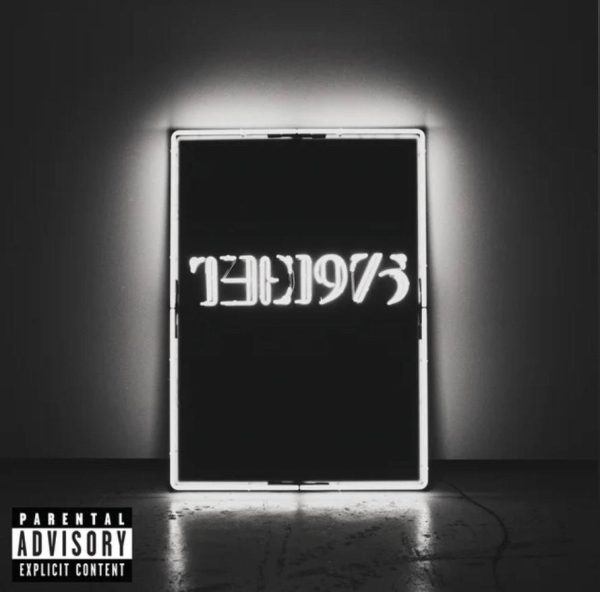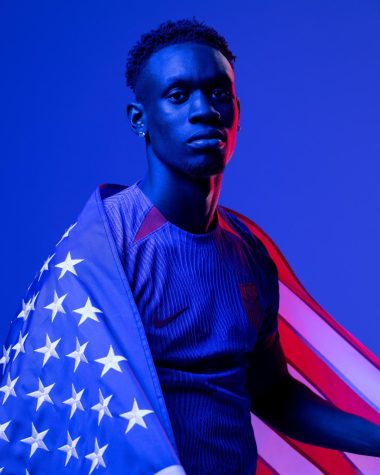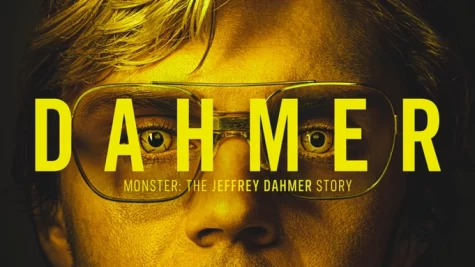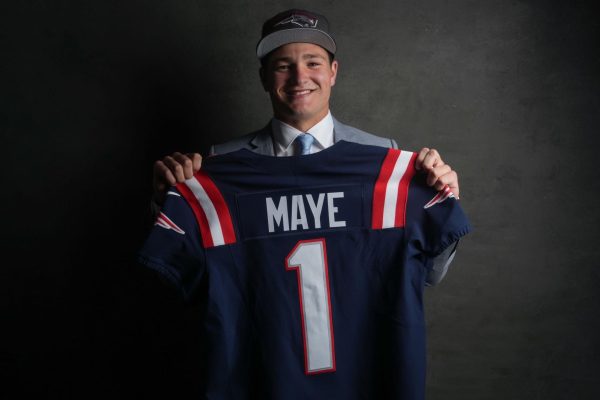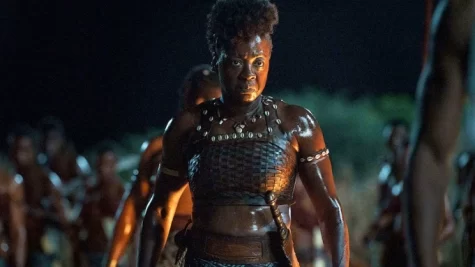Hip-Hop MVPs of the decade: 2014 and 2015
The birth of a “Monster” and 50 shades of black in Earl Sweatshirt’s “I Don’t Like S***, I Don’t Go Outside”
For the next few weeks, Amherst Wire entertainment is bringing the best of the decade right to you. To do my part in contributing to our end of the decade content, I will be highlighting some of the most important moments from rappers in the decade. The schedule will go as follows:
Published: Kanye goes back to back (2010 and 2011)
Published: Chief Keef drills his way to the top/ Kendrick Lamar sparks hip-hop’s cold war (2012 and 2013)
Today: The birth of a “Monster” / Earl Sweatshirt paints in shades of black (2014 and 2015)
Dec 29: Chance the Rapper calls his shot / Migos put their imprint on the “Culture” (2016 and 2017)
Dec 31: ??? (2018 and 2019)
Without further adieu, here are my picks for 2014 and 2015.
2014: The birth of a “Monster”
Future is one of music’s most beloved supervillains. With every fable of his male pettiness that travels across the web, his #FutureHive grows larger, launching their Future inspired memes and Future-infused mosaics into Twitter replies. From “I’m good luv, enjoy” to his interviews with questions about his ex’s current relationship, he’s become a bit of a symbol for toxic masculinity. But it wasn’t always this way.
2014 was a tale of two Futures.
With a baby on the way and the announcement of his engagement to Ciara, Future seemed to be moving in a different direction and leaving the lean sipping, bachelor lifestyle behind. To the naked ear, Future’s Sophomore album “Honest,” under Epic Records, sounded like Future, but this Future seemed to have drifted even further from his mixtape roots that built his loyal fanbase. In many ways, he went pop, cleaning up the toxicity that had permeated his mixtapes.
If you’re looking for evidence that Future went too pop, give “I Won” ft. Kanye West a listen. The fierce 808 drums and trap high hats that Future fans had recognized as Future’s signature sound from the jump had been replaced by this sappy piano. Lyrically, Future didn’t fully erase his toxicity, but he masked his misogynistic tendencies in the form of a love ballad, framing his partner as a “trophy” that he wants to show off. No, this isn’t exactly “Romeo and Juliet” or “The Notebook” level romance. But, it’s at least Kevin James in “Hitch” level romantic when comparing it to 2011’s “Much More,” where Future dedicates more lyrics to lean than he does his special stripper friend, or “I Got Yo B****.”
“Honest” is in no way a bad album. It features a near-perfect Future and Andre 3000 collaboration that surprisingly attacks materialism. “Move That Dope” with Pharell, Pusha T and Casino is just as exhilarating as it was when I first heard it in 2014. When I listen to “On Momma” today, Future’s ability to turn just six words into a hook that makes me feel like I can run through walls, still baffles me.
But even Future himself admits that he drifted from the music that made him a mixtape monster in a 2014 interview with Tim Westwood. Amidst his endless flexing of chains and “I’m Future Hendrix forever” proclamations in the interview, he takes the time to explain what changed during the creative process for “Honest.”
“It’s just like where I was at in my personal life. The subject matter and things I was talking about, out of respect, I was shying away from certain records and putting out other kind of vibes for my situation,” said Future to Westwood.
So when the mixtape “Monster” flooded the digital streets of DatPiff and Spinrilla in October 2014, only four months after the release of “Honest,” and rumors of the engagement being called off spread, it was looked at as a return to form for Mr. Hendrix. I would go as far as to say this moment was the birth of a new “Monster.”
This new beast feasted on negativity more than ever before. “Throw Away,” reveals Future at his most toxic. In the first half of the song, he makes it clear that he has zero interest in relationships and even goes as far as referring to his former lovers as “throwaways” on the hook.
As the beat transforms from this bustling trap instrumental to an airy, robotic instrumental, Future attempts to haunt his past lovers from the grave of their dead relationship.
“When you laying with that n****, hope you thinking about me / ‘Cause I’m thinking about you,” he says at the tail end of his verse.
With the second half of “Throw Away,” it becomes clear that Future has not gotten over his previous sexual flames, and he hopes he remains on their mind like they have remained on his. This level of bitterness is toxic masculinity at its finest.
“Codeine Crazy” is another moment on “Monster” where Future slips up and let’s us see behind the mask of the monster. In the midst of his codeine fueled partying with models, he has a brief moment of sorrow that can’t be ignored.
“Too many days gone by / Sittin’ by the phone, waitin’ ’til I reply / Drying my eyes, believe it or not,” said Future.
Brief mentions of depressing moments amidst mindless drug use and partying have become a signature for Future since “Monster.” This pool of sexual counterparts, wealth and mind-altering drugs that Future flaunts seems to be less about the pleasure of it all, and more about distracting Future from anything that can hurt him.
“Monster” and the Ciara breakup were the catalysts that launched Future into a different level of superstardom and toxicity. If you’re looking for proof of Future’s powers, just check the memes in the replies to this tweet. It’s no coincidence that Future’s highest-selling album to date, “DS2” followed this mixtape. For better or for worse, the toxic persona draws headlines, which in turn drives album sales. While you don’t necessarily have to agree with all that Future represents, you have to at least respect the ability to turn male pettiness into profits.
2015: Earl Sweatshirt’s “I Don’t Like S***, I Don’t Go Outside” is painted in shades of black
Earl Sweatshirt is the closest thing to a rap prodigy since Lil Wayne in 1999.
By adolescence, he had already shown a propensity to rap at levels that few reach even with a completed discography. His debut mixtape “Earl,” released under the Odd Future umbrella when Sweatshirt was only 16, turned many heads with breathtaking rap mechanics paired to a juvenile delivery and the vivid, striking imagery of a slasher horror film.
After some trouble at home, it wasn’t until 2013 that fans would get another full-length solo project from the rap prodigy with his Columbia Records debut “Doris.” With tracks like “Chum” and the Frank Ocean assisted “Sunday,” Earl revealed new layers of emotional depth while still displaying mind-bending rap mechanics.
This was all before the ripe age of 20.
While “Doris” peeled back the edges of a juvenile serial killer to reveal Earl’s emotional vulnerability, 2015’s “I Don’t Like S***, I Don’t Go Outside” is Earl Sweatshirt’s signature album in his discography thus far. Everything from the “Grief” music video to the solid black cover art revealed the project would be his darkest yet; visually, sonically and emotionally.
Each instrumental, nearly 100 percent produced by Earl under the moniker RandomBlackDude, sounds like a different shade of black. From the kooky organ on the introduction “Huey” to the grim boom-bap beats on the album’s tail end in the songs “DNA” and “Wool,” the connection between Earl’s beats and his lyrics is symbiotic.
On “Mantra,” Earl sounds more isolated than ever. As his fame rises, the people around him switch, but the duties that come with being a celebrity do not lend themselves to stopping and reflecting.
“Now you surrounded with a gaggle of 100 f****** thousand kids
Who you can’t get mad at, when they want a pound and pic
Cause they the reason that the traffic on the browser quick
And they the reason that the paper in your trouser’s thick” – Earl Sweatshirt
“Grief” is the album at it’s darkest. The shade of black on this track radiates danger as Earl raps from his breaking point. His delivery is past morose and much closer to rage when reflecting over the dreary, distorted instrumental in the first verse. The second verse replaces that feeling of rage with misery as he continues to grieve the loss of his grandmother. Written after canceling his tour due to health conditions forcing Earl to stay inside, the title at which Earl chose as a joke became his reality.
“Good grief, I been reaping what I sowed
N****, I ain’t been outside in a minute
I been living what I wrote” – Earl Sweatshirt
In an interview on NPR’s “Microphone Check,” Earl compares the song creation process for “I Don’t Like S***, I Don’t Go Outside” to taking photos based on how he attempted to capture moments. Nothing reflects this better than “DNA” ft. Na’kel. In the NPR interview, Earl goes into the details of the moments preceding his friend, fellow rapper and skateboarder Na’kel’s verse, with Na’kel learning of his friend’s passing while high on acid. The pain seeps through the bravado as he kicks off his verse and eventually pausing after acknowledging his friend’s passing on the mic.
Ultimately what made “I Don’t Like S***, I Don’t Go Outside” stand out to more than just about any other album in 2015 is Earl’s ability to bring the listener into his world. While the instrumentals sound as if they were made in the shadows, they ironically put a spotlight on the painfully direct lyrics loaded with signs of depression, anxiety and bleakness. The combination of Earl’s skills as a producer and lyricist might not be able to make you feel the pain that he was going through at the time, but his energy radiates through the speaker as if you’re in the decrepit room with him.
Other notable moments in 2014 and 2015
- Brooklyn’s Bobby Shmurda puts himself on the map with his hit single “Hot N****” in the summer of 2014. I’m the midst of his newfound fame, Shmurda was arrested at the tail end of 2014 for murder, gun and drug related charges.
- In December 2014, J. Cole releases “2014 Forest Hills Drive” which eventually goes platinum several times over with no features.
- In March 2015, Kendrick Lamar releases “To Pimp a Butterfly” which goes on to win the GRAMMY for rap album of the year and receive the highest of high praise from fans and hip-hop critics alike.
- After receiving ghostwriter slander from Phillidelphia rapper Meek Mill via Twitter in July 2015, Drake releases back to back diss tracks aimed at Meek. “Back to Back,” the latter of the two, was both so catchy and so vicious that it even landed Drake a GRAMMY nomination.



